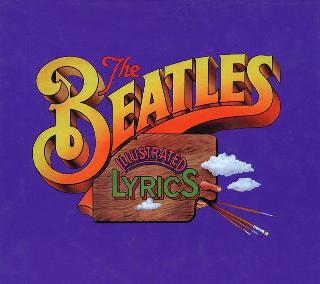Index
Home
Vorige
Rain
Composer(s) : Lennon and McCartney
Year : 1968
Chords/Tabs: Rain
Notes on "Rain"
Rain
KEY G Major
METER 4/4
FORM Intro -> Verse -> Verse -> Refrain ->
Verse -> Refrain -> Verse -> Outro (fadeout)
GENERAL POINTS OF INTEREST
Style and Form
- For all of its musical and technical innovation, it's a bit ironic to
note how standard is the form and harmonic content of this song.
- Though no sitars or other ethnic 'world music' instruments are used here,
the style of the song very much connotes the style of classical Indian
music by virtue of the droning harmony and the, at times florid tune.
Melody and Harmony
- As far back as "Love Me Do" (amazingly), John and Paul had stumbled
onto a novel use of spicy little trills and langorously stretched out
melismas that, along with sung open and parallel fifths, is truly one
of the more subtle trademarks of their early "sound." Here, what is
essentially the identical technique is pushed beyond the routine
envelope to create an entirely new and exotically "foreign" effect.
- Aside from ornamentation, the tune is structurally organized in a
very "Indian" manner; with the appproximate two halves of the melodic
octave each isolated to its own respective section of the song; the
verse stays carefully within low G up to E, while the refrain deals
with the upper end of the octave, from the high G down to middle C.
- The harmonic budget is frugal to the extreme of creating, what I
can only assume is, an intentionally static effect. You'd expect
the use of I-IV-V throughout this song to create a much more non-modally
inflected sense of G *Major* as the home key than was the case in
PW. It's intruiging, though, to contemplate how the even more
widespread use in R of superimposed chords and the ornamentalized
melody manage to over-ride the sense of clear Major mode and
suggest something Modally tangy in flavor, even though the 'letter' of
the musical text does not support this notion!
Arrangement
- Both vocal and instrumental tracks on this song were subjected to
speed changes in between original recording and mixdown for mastering,
and this detail accounts for, as much as any other factor, the
psychadelic, surreal quality that surrounds the whole of it.
- Lewisohn (ibid.) tells us that the backing track was performed in fast
tempo (and, implicitly, in a higher key than G), so that it could be
slowed down on playback to what we have on the final recording; thus
altering not only the pitch but the 'textural' sound of the ensemble.
The vocals (at least John's lead) were manipulated in the opposite
direction (though Lewisohn inadvertantly tries to confuse us on
this point); in other words, John sang for the recording in a slower
tempo and lower key, so that on faster playback his 'Mickey Mouse' vocal
not only presents him uncharaceteristically beyond his normal upper
range, but also with an eerily hyperactive vibratro in his throat.
- John's double-tracked lead vocal is accompanied by George and Paul
in the verses, and by John Himself in the refrains. The backers starts
in the second verse, where they either echo and comment on what the lead
sings or else they "emboss" what he sings by harmonizing right along with
him.
- Ringo has a veritable field day on the drums and cymbals throughout.
Also, even on this relatively 'progressive' track, they take the time
to bother with one of their so typically fussy tambourine parts; on all
four beats in the intro, on alternate even-numbered beats in the first
pair of verses and the refrains, and shaken on every eighth note of the
measure in verses three and four.
SECTION-BY-SECTION WALKTHROUGH
Intro
- We have here as attention-grabbing an opening in its own way as is
the acapella vocal opening of PW; a ra-ta-tat half-measure's fanfare
of solo snare drums, followed by four measures of the drone-like guitar
vamping on the I chord (equally reminiscent of both tamboura and pipes)
that pervades the piece.
- The lower reaches of the arrangement definitely sounds as though there
are some kind of open fifths at play; whether they are sounded entirely
by the bass guitar, or are a composite of bass and lead guitar is not
easy to ascertain given the level of distortion applied to the finished
track.
Verse
- The verse is an asymmetrically phrased nine measures in length; parsed
as 5 (actually 3+2) + 4:
|G |C D |G |C D |G |
G: I IV V I IV V I
|C |- |G |- |
IV I
- Uneven phrase lengths are another good example of an offbeat compositional
technique that had been a manifest part of the Beatles arsenal from the
very beginning, and yet, it is used here in the (shall we call it) Late-
Middle-Period to very different effect than it had been back in the days
of "Love Me Do",
"P.S. I Love You", and the like.
- Toward the end of the second verse there's quite a blooper. It's hard
to unravel what was the respective cause and effect of it, but it sounds
like between John's behind-the-beat delivery of the words and a hesitating
screw up of the bass part by Paul right where the chord is supposed to
change back to G in measure 8, they manage to add a dizzying excess pair
of beats or so and still keep going. I suspect that this was unplanned
but kept in the final version anyway because of its serendipitously
appropriate off-kilter effect in context.
- Measures 6-7 feature an implied superimposition of G over the C chord
similar to that seen in PW.
- Near the beginning of the third verse (~1:20 into the track) there is
what sounds like a faintly sounded "cueing beep". Was this supposed to
be a half-hearted anticipation of the similar effect near the mid-point
of "Tomorrow Never Knows"
(you know, the thing that sounds like 'at the
tone the time is ..."), or is this some kind of subtle clue that this
song actually dates from the Twickenham _Get Back_ sessions of 1/69 ?
(JUST KIDDING!)
Refrain
- The refrain is twelve measures, and is built out of a repetition of the
same (again, non four-square) six-measure phrase:
--------------------- 2X ----------------------
|G |- |C |- |G |- |
I IV 6/4 I
- This section conveys a sense of ecstatic slowing down even though the
tempo here is the same as it was for the verses. This effect is created
by the change of beat for the first four measures from its erstwhile
bounce to something more plodding and regular, combined with the suddenly
with the slower harmonic rhythm of the section and the yawningly stretched
out vocals. At the end of this section, the illusion of speed change is
spun in the opposite direction by the way in which you feel an acceleration
when the bouncier beat resumes in the final two measures.
- The time warp effect is pushed still one step further in the second
refrain by the addition of slow triplets to the bassline in the first
four measures. Yet *again* one more example of a technique we've seen
in so many earlier Beatles songs, that is recycled here to a different,
more strange effect than usual. Looked at from the opposite perspective,
you might say that while a song like
"Rain" makes you 'know' we're not
in Kansas any longer, it still does seem like the Boys sure wanted to
take along a lot of their same old clothing for the big trip.
- We have the same "elusive" kind of C6/4 chord in this refrain as we saw in
PW. This time, also it is superimposed over open fifth G Major drone
in the lower parts.
Outro
- The outro commences with what seems at first like an ad-libitum "general
pause" and a short passage for drums and bass guitar. If you count along
carefully you discover though that the entire thing is quite in tempo,
and exactly three measures long.
- What follows at this point is the unprecedented (and in retrospect,
historically signficant) trailing vocal of John's, dubbed over the
backing track by playing a tape of his earlier vocal in reverse.
The actual splicing and mixing in of this special effect was done
*very* smoothly, especially by the standards of '66 technology. No
pops, no clicks, no sudden change of ambience, etc.
- If you have any doubt about the technique used here, you can either
spin your turntable backwards, or transcribe the trailing vocal part
and sing *it* yourself in reverse. The only suspicious thought I
have concerns the sustained sung note 'C' which occurs fairly well
into the fadeout, and which, for the life of me, I cannot find the
counterpart of in the original "forward" vocal.
SOME FINAL THOUGHTS
- As ground-breaking as this single was, it somehow didn't turn out
to be so record-breaking on the charts. Don't get me wrong; by
the standards of mere mortals, the single did just *fine* in terms
of chart position and copies sold. But by the standards of Beatlemania,
it didn't come close to some of the really big hits. Wha' happened !?
Were these two songs, at the time, perhaps a bit *too* original, or
could it have been the opposite -- were we all becoming a bit blase
where the Beatles were concerned ?
- I can only speak for myself, and indeed, I'll be the first one to
admit my own experiences may not be typical; ... but I know they're
mine :-) A warning though -- unbridled soppy nostalgia runs rampant
in the next couple paragraphs. You may want to turn back now.
- The first time I heard
"Paperback Writer" was from a jukebox in the
Seagull Coffee Shop, on Brighton Beach Avenue (under the 'El', and not
far from the boardwalk), sitting with a group of extended friends at
a couple of tables pushed together, all of us wallowing in the euphoria
of a terminal case of High School Senior-itis; and this new song by the
Beatles was our soundtrack that late spring afternoon . It's strange
how after all these years I can still remember pausing for a moment to
acknowledge it with a head nodding "oh well, will you listen to that!",
but then also quickly diving back into the conversation that had been
interrupted. Funny how I can't remember a thing about the contents of
that conversation, yet I do remember the music; vividly!
- Within two months, things changed radically. I remember coming home
from my stint as music counselor at a "sleepaway" camp, flipping on
the newfangled 'stereo' receiver I had been given as a graduation
present by my parents, tuning in the radically new upscale *FM* rock
station (Scott Muni on WNEW, no fooling) and hearing for the first
time the Boys' *really new* double-A side;
"Yellow Submarine" b/w
"Eleanor Rigby".
By this time, NO ONE was blase about it any more,
or in the least.
- But at this, all excess reminiscence aside, I'm getting way ahead of
our story :-).
Ook op Past Masters, Vols. 2:
(c) 2024 Serge Girard


 (c) Alan Aldrigde, The Beatles Illustrated Lyrics
(c) Alan Aldrigde, The Beatles Illustrated Lyrics